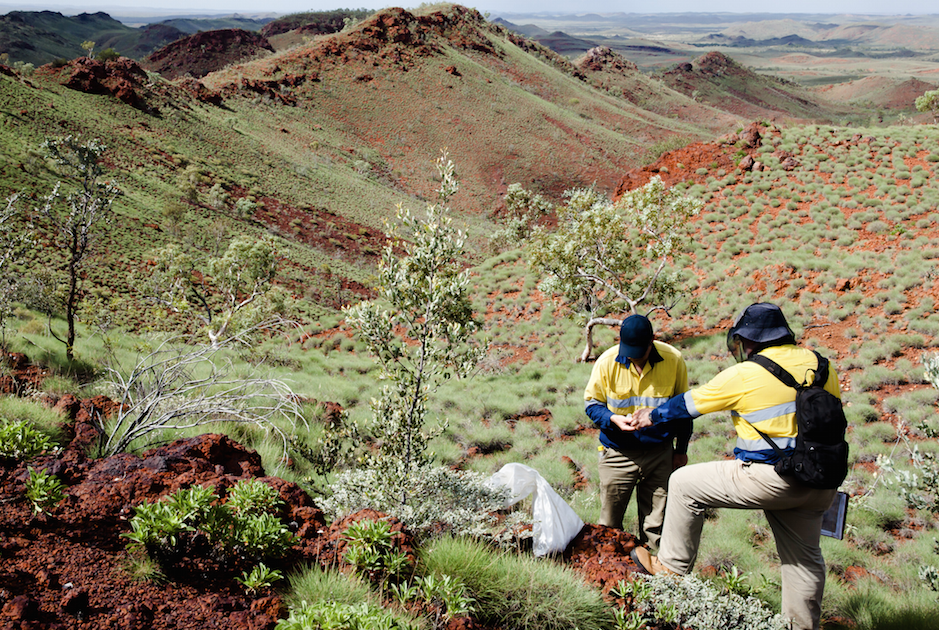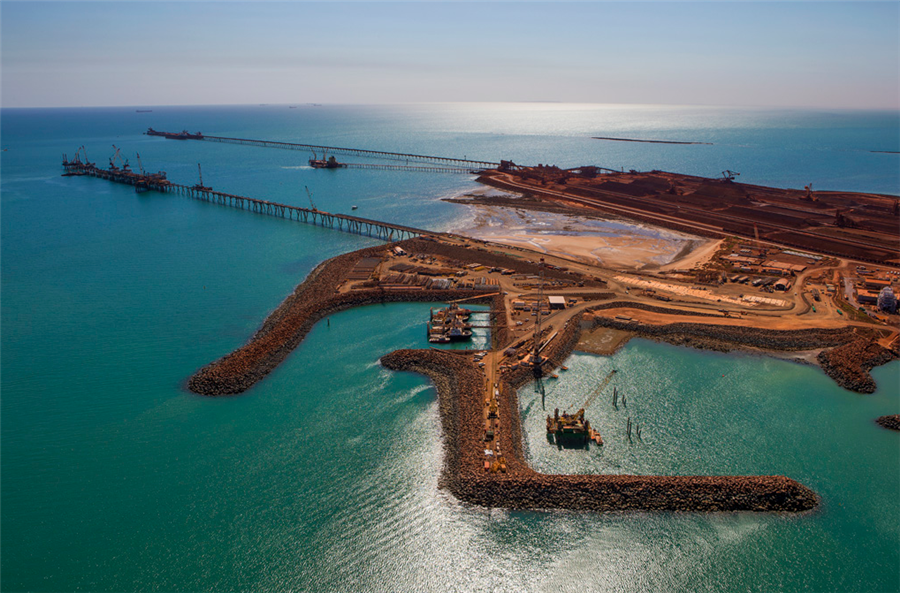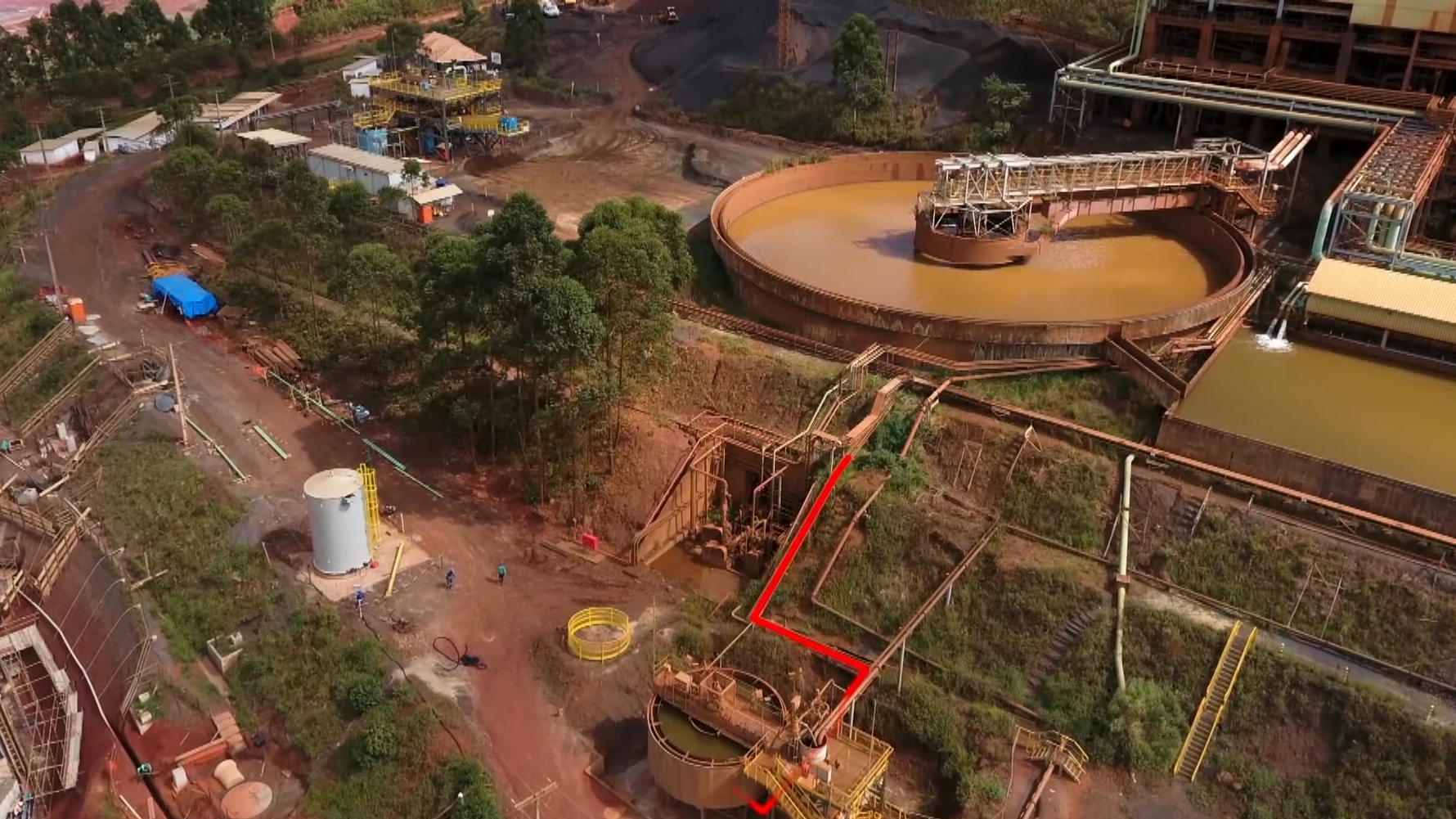Odds ‘n’ Sods Part I: Finding a job as a geologist in the 1980s

We all have our firsts in life; the stories of those defining moments that changed things forever. First beer, first kiss, first car. How about your first job? Here’s how I — an averagely intelligent 21-year-old middle class boy from southeast England — landed my first career move down the deep level mines in South Africa. I committed to a three-year stint, embracing an unknown world of diamond drilling, stope mapping, shaft sinking and reserve calculating.
I graduated in June 1984 from a second-rate college with a first-rate geology program, landing a decent degree that gave me a few more career options than I might otherwise have had. But other than a few weeks of geophysical work with the British Geological Survey, I had no experience and knew next to nothing about my chosen vocation. The career scrap heap beckoned one short month after graduation. I was getting £35 a week on the dole so in a moment of financial frustration I bought a train ticket to London. I’d go and knock on mining company doors; that would solve the problem – job offers would flood in and I’d be rich.
My first port of call was the South African embassy in Trafalgar Square. Politically naive, I walked past the anti-apartheid campaigners to the information desk.
‘I’m looking for a list of South African mining companies with offices in London,’ I said.
‘Here you go,’ said the nice-looking woman, handing me a large piece of paper with dozens of names on it.
An hour later I was trying to bluff my way into the offices of Charter Consolidated (aka The Anglo American Corporation of South Africa) in Holborn, but the security guard was on to me, and was having none of it.
‘Can I see the human resources office please?’
‘No. Sorry mate. You can’t come in. We’re not hiring.’
‘But … How do you know? They might be?’
‘No. Bugger off.’
Disheartened, I was heading out the door contemplating a desperate future stacking shelves in Tesco when a man in a pinstripe suit with an important looking briefcase asked me what I wanted.
‘Looking for work,’ I said. ‘I’m very good at metamorphic petrology and my structural geology is above average.’
And here’s where the Gods smiled on me. He was the Human Resources manager. Recruiting geologists was one of his pre-occupations that month and despite my excellence in metamorphic petrology, he offered to interview me there and then. Sneering idiotically at the security guard, I followed Mr. HR into the grandest office I’d ever seen. Mind you, my dad worked in a textile dye house full of steam and pipes, so I didn’t have much to compare it with.
My innate luckiness was confirmed at check in when I finally clued in that Anglo American had sent me a business class ticket
A month later I was on a plane to Johannesburg. My innate luckiness was confirmed at check in when I finally clued in that Anglo American had sent me a business class ticket. Not only that, I was up in the fabulously amazing bubble deck of the 747, which had an actual stand up bar where a bunch of large South African businessmen were standing around drinking martinis. Yup. I had a gilded future ahead of me as a captain of the extractive industries.
South African Airways couldn’t fly over mainland Africa because of anti-apartheid sanctions. Most African countries wouldn’t allow them to enter their airspace. To fly to Jo’burg, they took the long way round – over the Atlantic, down around the bulge of West Africa, with a refueling stop in the Cape Verde Islands. To be honest, my memory of the fine details of the flight is a little hazy. I was getting pickled on excellent South African wines and cognac, and my new friends had me wide-eyed with their Boys Own stories of Africa, diamonds and gold mining.
It was 2 or 3 a.m. and hot as Hades when we landed on the main island. We wobbled off the 747, down a dangerously old mobile staircase onto the runway. In the dark, we followed a badly marked path into a terminal lifted piecemeal from a Graham Greene novel. I swear to this day it was made of bamboo canes and old rope, with spinning fans down the middle of the ceiling.
Strung across the middle of the lounge was a red velvet rope, the kind that keep the punters in line outside nightclubs. Behind it, at the other end of the lounge, was a large motley group of Europeans. Badly dressed and mostly overweight, they were chain smoking and clutched plastic carrier bags that disgorged enormous quantities of dark bread, sausages and oranges. Slightly amateurish-looking armed guards, clutching ancient WW2 era rifles, sullenly prevented us from going past the rope.
‘Who are they?’ I asked my worldly new friends, pointing at the strangers.
‘Russians’ one replied with barely suppressed hostility.
‘Really? Wow, Russians eh? Hoo-wee. Gosh’
He looked at me with obvious pity in his eyes — somewhere in rural England a village was missing its idiot. But I couldn’t help it. I’d never seen a Russian before. There was a kid called Salakov at high school but he wasn’t one; far as I knew, we didn’t have them in my dull, retirement home town of Broadstairs. If we did have them, they’d have to be spies.
They were Russians. Soldiers, technicians and workers — on their way to Angola to reinforce the pro-Communist forces who were fighting a nasty bush war against the South African regime; cold war proxies slugging it out for oil and diamonds. Aeroflot flew them there and was one of the only other airlines to stop in the Cape Verde islands.
Our nocturnal stand off was repeated a couple of times a week when the scheduled flights landed a few minutes apart. The Russians glared at us, hostility radiating from them. Some of the rougher looking South Africans returned the compliment. Sixty minutes later we were ushered back on to the plane, leaving Boris and the other sons of Lenin to their oranges and cheap cigarettes.
Hours later, we landed at Jan Smuts airport in Jo’burg and I stepped, hungover, onto African soil for the first time. I was hypnotized and it still stands out as a life changing moment for me. I was met by someone from Anglo’s HR department. A big athletic man, he’d never worked down a mine, but boy, he knew how to fill in the HR forms in head office.
When I thanked him for the business class seat his eyes narrowed in a frown, and he muttered ‘Bloody idiots in Holborn, not again …’
With minimal training, I was thrown straight into the deep end; an intimidating world of 7,000 foot cage drops, rock bursts and thousands upon thousands of workers
He dropped me off at the Holiday Inn in downtown Jo’burg. Two days later, a driver delivered me to the Vaal Reef’s mine Single Men’s Hostel in the grubby little mining town of Orkney, 100 miles (161 km) south of Jo’burg. It was goodbye transient-luxury-hello-reality. I didn’t go home for two and a half years.
With minimal training, I was thrown straight into the deep end; an intimidating world of 7,000 foot (2,134 metre) cage drops, rock bursts and thousands upon thousands of workers going down nine separate shafts every day. Vaal Reefs mine produced 2.5-million ounces of gold a year on top of roughly 1,600 tonnes of U3O8 extracted from the carbon layers at the bottom of the gold reefs.
I was assigned first to No. 5 Shaft, then to No. 2 Shaft, which was much older and had churned out 250,000 ounces of gold a year, regular as clockwork, since the 1950s. There was a lot of pressure on us to keep production up because the development costs for the shaft were paid off years previously. A young greenhorn geologist, I quickly learned how to map tunnels and stopes: horizontal, inclined, bent, vertical and occasionally on the verge of collapse. After a few months I was mapping three to four days a week, trying hard to keep up with the production schedule of my part of the mine, which included a main haulage tunnel that was being double shifted.
Double shifting meant two blasts per day rather than one, and an advance of about six metres per day, or close to 200 metres a month. If I forgot to map it, even for a couple of weeks, the backlog of unmapped tunnel built up quickly. The haulages were white washed by the equipping crew as they installed rails and water and air pipes, and the sides would get caked in dried-on rock dust and black soot from diesel exhaust fumes, making it impossible to map. The net result of slacking off was the loss of a lot of structural and stratigraphical geological information and a young geologist who looked like a lazy idiot in the next planning meeting.
The miner in charge of the double shift was nicknamed “Inja” by his crew (“dog” in Zulu.) The first time I met him he was just back to work from medical leave. He’d had multiple pre-cancerous moles removed from his front and back, and was sporting a dozen or so small, stitched up wounds all over his torso. In the warm humidity of the deep level mining environment — it was 30 degrees Celsius at 7,500 feet (2,286 metres) below surface — they were tormenting him. Sweat got into his stitches and must’ve felt like lemon juice on paper cuts. Every time he moved he cursed under his breath in Afrikaans and his coveralls were speckled with small spots of blood that spread out into the damp cloth. You could see his crew were loving it, and doing their best not to laugh.
A young greenhorn geologist, I quickly learned how to map tunnels and stopes: horizontal, inclined, bent, vertical and occasionally on the verge of collapse
When I got to the face, he was really grumpy and was sticking the last detonators and fuse chord into the blast holes. It was routine to have a quick chat to the miner and I had to introduce myself as the new engelsman (Englishman) geologist. He’d be calling on me for geological advice so best if he knew who I was.
The crew had left and it was just me and him, and he knew I was a beginner. I was boring him with talk of the exciting rocks he could expect as the face advanced. As we chatted he lit a cigarette. But he also lit the main fuse and dropped it on the ground. I hadn’t noticed. Eventually, I saw an orange glow on the ground, which seemed to relate to a burning thin ropey thing on the floor at my feet.
Just as I realised it was the fuse, it split into four, then 42, shorter chords all burning away merrily at a decent clip toward the face. I knew Inja was testing me and there was sod all I could do but brazen things out. If I lost face on the first visit I was toast for the next three years. I stayed put. As the orange flames climbed the face, Inja finally turned and walked casually away. I figured we had maybe 10-20 seconds before I died an agonising death, dismembered and peppered with shrapnel.
The tunnel had a short bend about 50 metres back. We just cleared the bend and stepped into the waiting place when the first Anfo charges went off and my overalls decided they’d try to escape.
It’s a strange, visceral feeling standing so close to 42 Anfo charges when they blow. As each charge goes off, shock waves resonate up and down the tunnel and your overalls shake. My hard hat fell off with the first detonation but I suspect that was me jumping with the shock of experiencing my first blast. The noise was like an orchestral drum being beaten with Thor’s hammer 42 times, but 50 times louder. Then it was all over bar the dust and the nitrous oxide smoke. I didn’t run or scream so I’d passed his test.
My second close encounter with blasting was altogether a bit more serious and the outcome at the time a bit less uncertain. I’d been asked to map a ventilation raise that connected two levels to facilitate the flow of air through mine workings. It was a beast; a 90 metre vertical rise and about 200 metres long, with a kink in the tunnel where the miners had drifted off course between surveys. The air flow was strong and upward, pushing me from behind as I climbed up the raise with my assistant, Dunkel. I was sweating heavily and the breeze chilled my damp overalls. The air flow told me the vent raise had holed into the next level up.
Dunkel and I climbed through a wooden platform half way up the raise and worked our way up the ladder. From where we were, the crew below had no chance of seeing us although we had passed them on the way up.
I slung my tape up the side of the tunnel and started mapping. A minute or two later, a huge detonation went off below us, alarmingly close. The tunnel filled with nitrous fumes. Then a second blast went off and a third. We couldn’t go down the ladder because they were blasting below us. I guessed they were “popping” boulders: large rocks blocking ore passes or tunnels would be drilled, usually a single hole, and a single charge set off to split them for removal. But I had no idea how many were being cleared and there was the real risk of getting caught in a blast if we went down.
But going up was also a major problem. The tunnel was foggy with nitrous fumes, which were still coming up in our direction, following the air flow. Dunkel and I agreed that the only choice we had was to go up, which meant breathing in the fumes and risking exposure to nitrous oxide from the Anfo. Despite its reputation as a party drug, breathing in too much nitrous oxide can irritate the eyes, nose and quickly cause lung problems. Longer exposure leads to light-headedness, giddiness and breathing in too much eventually causes you to pass out and die.
Most of us wore scarves underground; two to three foot lengths of a grey cottony material to soak up sweat as we worked. My basic safety training kicked in. We poured water over our scarves, squeezed them out, and wrapped them round our faces. They acted as a crude gas mask, soaking up some of the nitrous gas as we breathed. We climbed up, moving quickly with the fumes, until we got to a spot where we could duck down a small side tunnel and avoid the worst of the gas. After a few minutes the smoke began to clear and we walked back slowly to the shaft feeling slightly lucky to have gotten away unharmed, and steering clear of the return air way that carried the fumes out.
Later that day, after a heated phone call from the geology office, the shift boss responsible for that part of the mine was reminded about the proper procedures for notifying crews that blasting was about to take place. And as for me, I swore to myself I’d ask a few more questions the next time I saw a crew blowing Anfo into a drill hole. If I didn’t, my three years underground might be over a lot sooner.
—Ralph Rushton is a geologist and has worked at mines and exploration projects in South Africa, Turkey, Bulgaria, Yemen, Iran and Pakistan. He is currently the president of Aftermath Silver (TSXV: AAG; US-OTC: AAGFF), a silver development company with projects in Chile and Peru. In his spare time, he writes about mining and exploration for his popular blog, urbancrows.com. He graduated with a geology degree from Portsmouth Polytechnic in the U.K., and completed a masters degree in geology at the University of Alberta researching the source of the placer gold in the Klondike.
More News
Rio Tinto posts lowest Q1 iron ore shipments since 2019, tempers forecast
April 15, 2025 | 03:55 pm
Trump orders tariff probe on all US critical mineral imports
April 15, 2025 | 03:16 pm
{{ commodity.name }}
{{ post.title }}
{{ post.date }}




Comments
D.OConnell
Hi Mr. Rushton, Thank you for sharing your experiences while working in S.Africa. Sounds like you got a crash course in highball mining down there. I can’t imagine what it’s like in those high production mines, large crew operations going to depths such as you describe My personal experience is in Canada’s northern mines where we drive 5m by 5m access ramps and drifts with crews as small as four to six miners per shift. There are larger, deeper mines here, of course, that require, most times, production shafts, but that’s not my domain of experience.
I would like to politely correct you regarding the resulting gases after a blast. What you and your coworker experienced while going up that ventilation raise was a dangerous exposure to Nitrogen Dioxide (NO2) and Carbon Monoxide (CO), not Nitrous Oxide (N2O), the “party drug”. Sounds like they didn’t pay much attention to the enforcement of pre-blast personnel evacuation procedures.